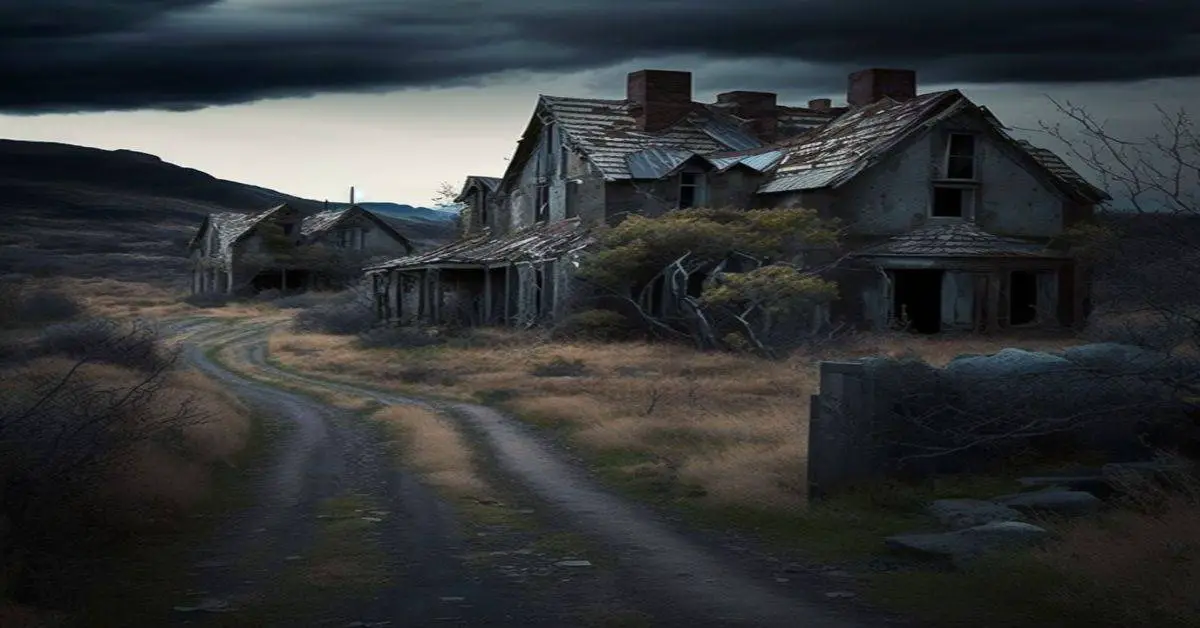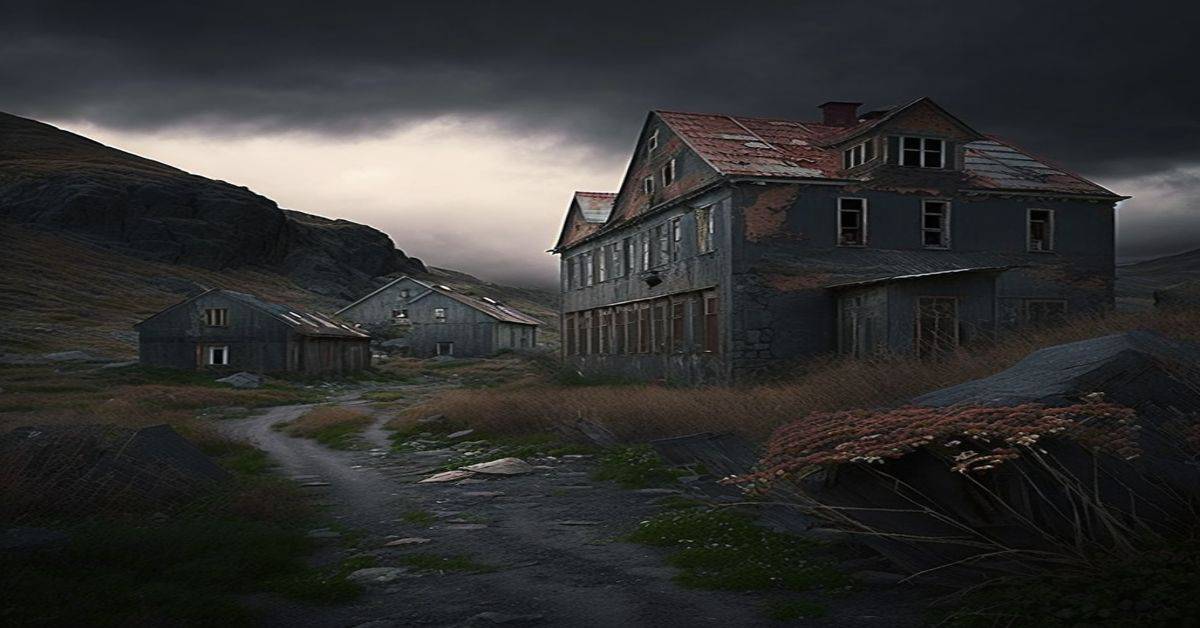Acron, Florida, a small town located in the eastern region of CR 42 and north of Paisley, was once a thriving community with a population that grew from just 30 residents to over 300.
Established in the 1860s, the town was situated on Acron Lake and boasted a sawmill, gristmill, farming families, and citrus groves.
Visitors could make an overland trip by mule cart or pay $6.00 for a steamer down the St. John’s River from Jacksonville to Hawkinsville, making Acron a popular destination for tourists and residents.
Despite its early success, Acron is nothing more than a ghost town, with little to no remains left for future generations to explore.
The town had a post office and school, and even housed the local Mason meetings, but today, these buildings have been demolished, leaving behind only a few scattered ruins and a rich history that is slowly being lost to time.
This article explores the rise and fall of Acron, delving into the factors that led to its decline and its impact on the surrounding region.
Key Takeaways
- Acron, Florida, was a small town located east of CR 42 and north of Paisley, established in the 1860s.
- The town was known for its citrus groves, sawmill, gristmill, and transportation infrastructure.
- Acron’s population grew from just 30 residents to over 300 during its boom in the late 1800s, with notable residents like the Campbell family and Flora Call.
- Despite its prosperity, Acron’s decline remains a mystery, and it has since become a ghost town with little to no remains left behind.
History and Establishment
Established in the 1860s on the shores of Acron Lake and known as Ackron or Akron, the town of Acron played a significant role in the citrus industry. Its citrus groves were a major source of income for the town, and the residents were known for their expertise in citrus farming. The town’s sawmill and gristmill also contributed to its economic growth, providing lumber for construction and grinding grains for flour. Visitors were drawn to the town’s natural beauty and paid $6.00 for a steamer down the St. John’s River from Jacksonville to Hawkinsville to visit Acron.
The town was home to several notable residents who significantly contributed to the community. John C. Campbell was the first postmaster when the post office was established in 1877, and he housed the post office in his home, which was also used as the local hotel for a time. The Acron School, established in 1875, had Sara Campbell as its first teacher, and Flora Call as the second. Flora Call was the mother of Walt Disney. The two-story log school also served as a church house and local Mason meetings.
Despite its disappearance into obscurity, Acron’s impact on the citrus industry and its notable residents’ contributions remain a part of its legacy.
Transportation and Population
Visitors to Acron, Florida, had two options for reaching the town during its boom in the late 1800s. They could pay $6.00 for a steamer down the St. John’s River from Jacksonville to Hawkinsville, followed by an overland trip by mule cart.
Alternatively, they could take an overland trip by mule cart the entire way. The town’s location east of CR 42 and north of Paisley made it a bit isolated, but its relative success was evident in its population growth from 30 to 300 residents.
Acron’s population growth was fueled by its establishment in the 1860s on Acron Lake. The town had a sawmill, gristmill, farming families, and citrus groves. Its transportation infrastructure made it accessible to visitors and allowed for the movement of goods in and out of the town.
However, Acron’s prosperity was short-lived, and it eventually declined. The reasons for its decline are unclear, but the town’s remains are few, and it has since become a ghost town.
“After learning about the ghost town of “Acron” in Lake County I went out to the area to try to find the townsite and see what could possibly remain. According to some maps I found that the location is just north of Paisley in the Ocala National Forest area. It was challenging trying to narrow down an area to cover since it is a large area, I didn’t really know where to begin.”
https://floridatrailblazer.com/2015/07/15/exploring-the-ghost-town-of-acron-in-lake-county/
Post Office, School, and Demolition
The establishment of a post office in 1877 and the Acron School in 1875 were significant events in the history of Acron, a community that was once thriving.
The post office was housed in John C. Campbell’s home, also as the local hotel.
The school was a two-story log building that provided education for local children and served as a church and meeting place for Masons.
These institutions helped to foster a sense of community and provided essential services for the residents of Acron.
Today, the original Campbell home, which also served as the post office and hotel, has been demolished, along with most other buildings in Acron.
However, some preservation efforts have been to commemorate this once-booming town’s history.
Notable residents of Acron include the Campbell family, who played an important role in the establishment of the post office and the school, and Flora Call, the mother of Walt Disney.
While Acron may be lost to time, the legacy of its residents and institutions lives on through these preservation efforts.
Frequently Asked Questions
What led to the decline and eventual disappearance of Acron as a town?
Acron’s decline and disappearance as a town may have been influenced by economic factors, including the decline of its sawmill, gristmill, and citrus groves. Demographic changes, such as population shifts and migration patterns, may have also contributed to its downfall.
Were there any notable events or conflicts that occurred in Acron’s history?
Notable events or conflicts in Acron’s history are not mentioned in available sources. Natural disasters like hurricanes and fires were common and impacted the town’s infrastructure and economy. Significant figures in Acron’s history include John C. Campbell, who served as the first postmaster, and Flora Call, who taught at the Acron School and was the mother of Walt Disney.
Residents of Acron enjoyed social customs such as church and Mason meetings. Festivals and traditions were likely celebrated, but no specific information exists. Daily life in the town likely revolved around agriculture and the mills.
Did Acron have any notable architectural or cultural landmarks that have since been lost?
No notable architectural or cultural landmarks have been recorded in Acron, which has completely disappeared. Therefore, there have been no preservation efforts to save lost landmarks or architectural relics that may have existed in the town.
Are there any remaining artifacts or relics from Acron’s history, and if so, where can they be found?
Where to find Acron’s historical artifacts and their significance are not known. The ghost town has disappeared, leaving little to none of its remains. It is uncertain if any relics or artifacts from Acron’s history still exist.


